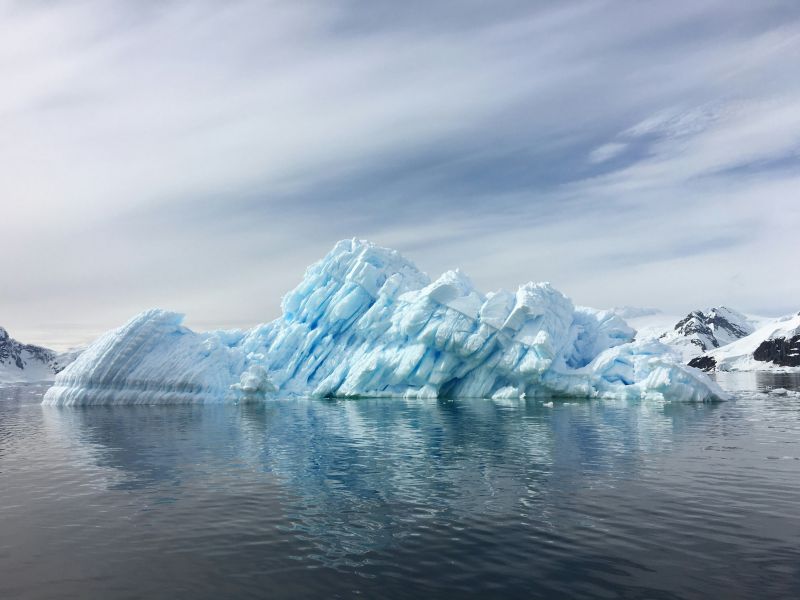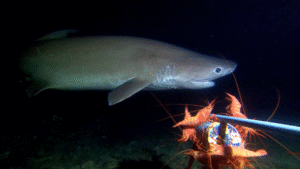Atlantic cold spot shows AMOC has 'been slowing for a century'
This week, researchers looking into the root cause of a centuries-old patch of cold water south of Greenland and its resistance to the overall warming trend of the Atlantic Ocean, has come to one simple conclusion. The AMOC is weakening.

For months – if not years – debate has raged among scientists over the general health of an ocean current system critical to regulating Earth’s climate – arguing over whether or not the Atlantic Meridional Overturning Circulation (or AMOC) is slowing down.
This week, researchers looking into the root cause of a centuries-old patch of cold water south of Greenland and its resistance to the overall warming trend of the Atlantic Ocean, has come to one simple conclusion. That it is.
Landing on only one explanation for the observed ocean temperatures and patterns in salinity across the region, researchers from the University of California, Riverside concluded that the AMOC – a massive current system responsible for moving warm, salty water northward and cooler water southward at depth, is indeed weakening.
“People have been asking why this cold spot exists,” said University of California, Riverside climate scientist Wei Liu, who led the study with doctoral student Kai-Yuan Li. “We found the most likely answer is a weakening AMOC.”
The AMOC acts like a giant conveyor belt, delivering heat and salt from the tropics to the North Atlantic. A slowdown in this system means less warm, salty water reaches the sub-polar region, resulting in the cooling and freshening observed south of Greenland.
When the current slows, less heat and salt reach the North Atlantic, leading to cooler, fresher surface waters. This is why salinity and temperature data can be used to reconstruct the strength of the AMOC.
Together, Li and Liu analysed a century’s worth of this data, as direct AMOC observations go back only as far as 20 years. From these long term records, they reconstructed changes in the circulation system and compared those with nearly 100 different climate models.
Their paper – published this week in Communications Earth & Environment – shows that only in the models simulating a weakened AMOC were outcomes generally matched to the real-world data. Models that assumed a stronger AMOC didn’t come close.

“It’s a very robust correlation,” said Li. “If you look at the observations and compare them with all the simulations, only the weakened-AMOC scenario reproduces the cooling in this one region.”
The same study found that the weakening of the AMOC correlates with decreased salinity – another clear sign that less warm, salty water is being transported northward.
The consequences are broad. The South Greenland anomaly matters not just because it’s unusual, but because it’s one of the most sensitive regions to changes in ocean circulation. It affects weather patterns across Europe, altering rainfall, and shifting the jet stream – the high altitude air current that steers weather systems and helps regulate temperatures across North America and Europe.
The slowdown may also disturb marine ecosystems, as changes in salinity and temperature influence where species can live.
The result from the study may now help to finally settle the long-held dispute among climate modelers about whether South Greenland cooling is driven primarily by ocean dynamics of by atmospheric factors such as aerosol pollution.
“Our results show that only the models with a weakening AMOC get it right,” said Liu. “That means many of the recent models are too sensitive to aerosol changes, and less accurate for this region.”
With limited direct data on the AMOC, temperature and salinity records provide a valuable alternative for detecting long-term circulation change, and for helping to predict future climate scenarios.
“We don’t have direct observations going back a century, but the temperature and salinity data lets us see the past clearly,” said Li. ‘This work shows the AMOC has been weakening for more than a century, and that trend is likely to continue if greenhouse gases keep rising.”
As the climate system shifts, the South Greenland cold spot may grow in influence. The hope now is that by unlocking its origins, scientists can better prepare societies for what lies ahead.
“The technique we used is a powerful way to understand how the ocean and climate systems have changed, and where they are likely headed if greenhouse gases keep rising,” said Li.


"*" indicates required fields
Printed editions
Current issue
Back issues

Back Issues
Issue 43 Sir David Attenborough’s ‘Ocean’

Back Issues
Issue 41 Holdfast to the canopy
Enjoy so much more from Oceanographic Magazine by becoming a subscriber.
A range of subscription options are available.







